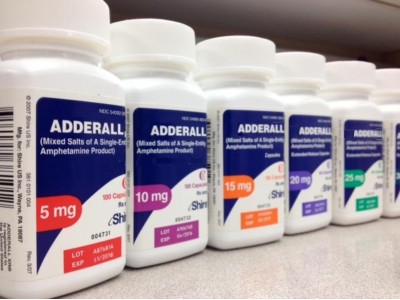Adderall IR (Immediate Release), Adderall XR (Extended Release), and Dexedrine (dextroamphetamine) are all stimulant medications used to treat attention deficit hyperactivity disorder (ADHD) and narcolepsy. While they share some similarities, there are key differences in their composition, duration of action, and how they are released into the body.
Read also diabetes mellits.
Composition:
Adderall IR and XR:
- Both Adderall IR and XR contain a mixture of four amphetamine salts: dextroamphetamine saccharate, amphetamine aspartate monohydrate, dextroamphetamine sulfate, and amphetamine sulfate.
- Adderall IR provides a quick release of the medication, resulting in a more immediate effect.
- Adderall XR is formulated to release the medication gradually over time, providing a longer duration of effect.
Dexedrine:
- Dexedrine contains only one active ingredient: dextroamphetamine sulfate. It is the dextro isomer of amphetamine, which is considered to be more potent and has a stronger effect on the central nervous system compared to the levo isomer found in Adderall.
Duration of Action:
Adderall IR:
- Typically lasts about 4-6 hours.
- Requires multiple doses throughout the day to maintain effectiveness.
Adderall XR:
- Designed to last about 10-12 hours.
- Usually taken once daily in the morning.
Dexedrine:
- Comes in both immediate-release (IR) and extended-release (ER) forms.
- Dexedrine IR typically lasts about 4-6 hours, similar to Adderall IR.
- Dexedrine Spansule (ER) provides a sustained release of medication that can last about 6-10 hours.
Release Mechanism:
Adderall IR:
- Provides a quick release of the medication upon ingestion, resulting in an immediate effect that peaks within a few hours.
Adderall XR:
- Uses a two-phase release system. The first phase releases half of the medication immediately, and the second phase releases the remaining half gradually throughout the day.
Dexedrine:
- Dexedrine IR releases the medication quickly after ingestion.
- Dexedrine Spansule (ER) releases the medication gradually over time, providing a more extended effect compared to the IR form.
Usage and Prescribing Considerations:
- Adderall IR is often used when flexible dosing is required, allowing for adjustments throughout the day.
- Adderall XR is typically prescribed for those who benefit from once-daily dosing to avoid the need for multiple doses and to maintain consistent symptom control throughout the day.
- Dexedrine may be preferred for individuals who respond better to dextroamphetamine alone or who may experience fewer side effects compared to the mixed amphetamine salts in Adderall.
Side Effects:
While all three medications share similar side effects due to their stimulant nature, such as insomnia, loss of appetite, increased heart rate, and anxiety, the specific side effects and their severity can vary between individuals. The choice between these medications often depends on individual response, side effect profiles, and lifestyle considerations.
Consulting with a healthcare provider is crucial for determining the most appropriate medication and dosage for managing ADHD or narcolepsy. They can provide personalized guidance based on medical history, specific symptoms, and overall treatment goals.
